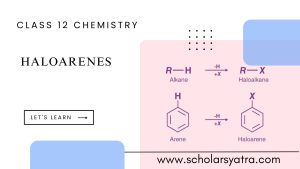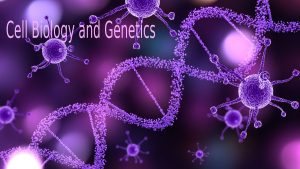Introduction: Why Study Invertebrates?
When you think of animals, your mind might jump straight to lions, birds, or whales—creatures with backbones. But what if I told you that over 95% of all known animal species don’t have a backbone at all? Yes, these are invertebrates, and they form the silent majority of the animal kingdom.
Table of Contents
ToggleIn this blog, we’ll dive into the world of invertebrates: who they are, how they are classified, and why they matter. This guide on the classification of invertebrates is written for students, teachers, and anyone who wants to see the natural world through the lens of biological classification.
What Are Invertebrates?
Invertebrates are animals without a vertebral column (backbone). Despite this lack, they exhibit an incredible diversity in structure, habitat, and behavior.
They range from microscopic organisms like protozoa to large and complex animals like octopuses. From the ocean floor to forest canopies, invertebrates play key roles in ecosystems—pollination, decomposition, and even medical research.
Scientific Classification: A Quick Recap
Before we jump into the types of invertebrates, let’s understand where classification fits in biology.
The biological classification system is hierarchical and follows these ranks:
Kingdom > Phylum > Class > Order > Family > Genus > Species
Invertebrates belong to the Kingdom Animalia and are distributed among several Phyla based on key characteristics.
Major Phyla of Invertebrates
Here’s an overview of the 8 major phyla of invertebrates you should know.
1. Phylum Porifera (Sponges)
-
Habitat: Aquatic (mostly marine)
-
Body Structure: Asymmetrical, porous
-
Special Feature: No true tissues or organs
Porifera are the simplest animals. They filter water through their porous bodies to extract nutrients. Though they don’t look like much, sponges are essential to marine ecosystems for filtering water and recycling nutrients.
Example: Euspongia (bath sponge)
2. Phylum Cnidaria (Jellyfish, Corals, Sea Anemones)
-
Symmetry: Radial
-
Tissue Layers: Diploblastic (two layers)
-
Unique Trait: Stinging cells called cnidocytes
Cnidarians exhibit two body forms: polyp (e.g., corals) and medusa (e.g., jellyfish). Many glow in the dark (bioluminescence) and contribute to vibrant coral reefs.
Example: Aurelia (moon jelly)
3. Phylum Platyhelminthes (Flatworms)
-
Body Shape: Flattened, bilaterally symmetrical
-
Structure: No body cavity, simple organs
-
Habitat: Free-living or parasitic
These soft-bodied creatures may be tiny, but some are dangerous parasites, like tapeworms and flukes. Others are free-living scavengers.
Example: Planaria (used in regeneration studies)
4. Phylum Nematoda (Roundworms)
-
Body Shape: Cylindrical and unsegmented
-
Digestive System: Complete (mouth and anus)
-
Habitat: Soil, water, or parasitic
Nematodes are found everywhere—from garden soil to inside our bodies. They play roles in nutrient recycling and plant root health but also cause diseases in humans and animals.
Example: Ascaris (intestinal parasite)
5. Phylum Annelida (Segmented Worms)
-
Structure: Segmented bodies with true organs
-
Body Cavity: Coelomate (fluid-filled cavity)
-
Movement: With bristles or setae
Annelids are known for their segmented structure and organ systems. They’re vital for soil fertility and often used in composting.
Example: Lumbricus terrestris (earthworm)
6. Phylum Arthropoda (Insects, Crustaceans, Spiders, etc.)
-
Key Trait: Jointed legs, exoskeleton (chitin)
-
Body: Segmented into head, thorax, and abdomen
-
Circulatory System: Open
This is the largest and most diverse animal phylum. Arthropods are everywhere—in the air, water, and land. They’re crucial for pollination, food chains, and biodiversity.
Example: Apis mellifera (honeybee), Drosophila (fruit fly)
“If the bee disappeared off the surface of the globe, then man would have only four years of life left.” – Misattributed to Einstein but reminds us of their ecological importance.
7. Phylum Mollusca (Snails, Octopuses, Clams, etc.)
-
Body: Soft-bodied, often with shells
-
Circulatory System: Open (except cephalopods)
-
Special Organs: Radula (tongue-like structure)
Mollusks are second only to arthropods in diversity. From slugs in your garden to intelligent octopuses, they show fascinating adaptations.
Example: Octopus vulgaris, Pila globosa (apple snail)
8. Phylum Echinodermata (Starfish, Sea Urchins)
-
Symmetry: Radial (in adults)
-
Skeleton: Internal (calcium-based)
-
Locomotion: Water vascular system
Echinoderms are marine-only invertebrates and are unique in their regenerative abilities. They play a role in controlling algae and maintaining ocean floor ecosystems.
Example: Asterias rubens (common starfish)
Table Summary of Invertebrate Phyla
| Phylum | Symmetry | Habitat | Key Feature | Example |
|---|---|---|---|---|
| Porifera | Asymmetrical | Marine | Porous body | Euspongia |
| Cnidaria | Radial | Marine | Stinging cells (cnidocytes) | Aurelia |
| Platyhelminthes | Bilateral | Various | Flat, unsegmented | Planaria |
| Nematoda | Bilateral | Soil/Parasitic | Cylindrical, unsegmented | Ascaris |
| Annelida | Bilateral | Moist soil | Segmented body | Earthworm |
| Arthropoda | Bilateral | Everywhere | Exoskeleton, jointed legs | Honeybee |
| Mollusca | Bilateral | Land/Marine | Soft body, some with shells | Octopus |
| Echinodermata | Radial (adult) | Marine | Water vascular system | Starfish |
Why Are Invertebrates Important?
Invertebrates aren’t just creepy crawlies—they are ecosystem heroes.
-
Pollinators: Bees and butterflies help plants reproduce.
-
Decomposers: Worms and some insects break down waste and dead organisms.
-
Food Web Support: They are primary food sources for birds, fish, and mammals.
-
Medical Research: Fruit flies and nematodes are used in genetic studies.
For Students: How to Remember These Phyla?
Here’s a simple mnemonic to remember the main invertebrate phyla:
“Poor Children Play Nice And Always Make Efforts”
(Porifera, Cnidaria, Platyhelminthes, Nematoda, Annelida, Mollusca, Echinodermata)
Final Thoughts: Discover the Unseen World
Invertebrates may be small or hidden, but their impact is vast. Whether you’re preparing for a biology exam or just fascinated by nature, understanding invertebrates gives you a deeper appreciation of life on Earth.
“In the end, we will conserve only what we love; we will love only what we understand.” – Baba Dioum
So next time you see a worm in the soil or a butterfly in the garden, remember—you’ve just met a key player in the grand design of life.







